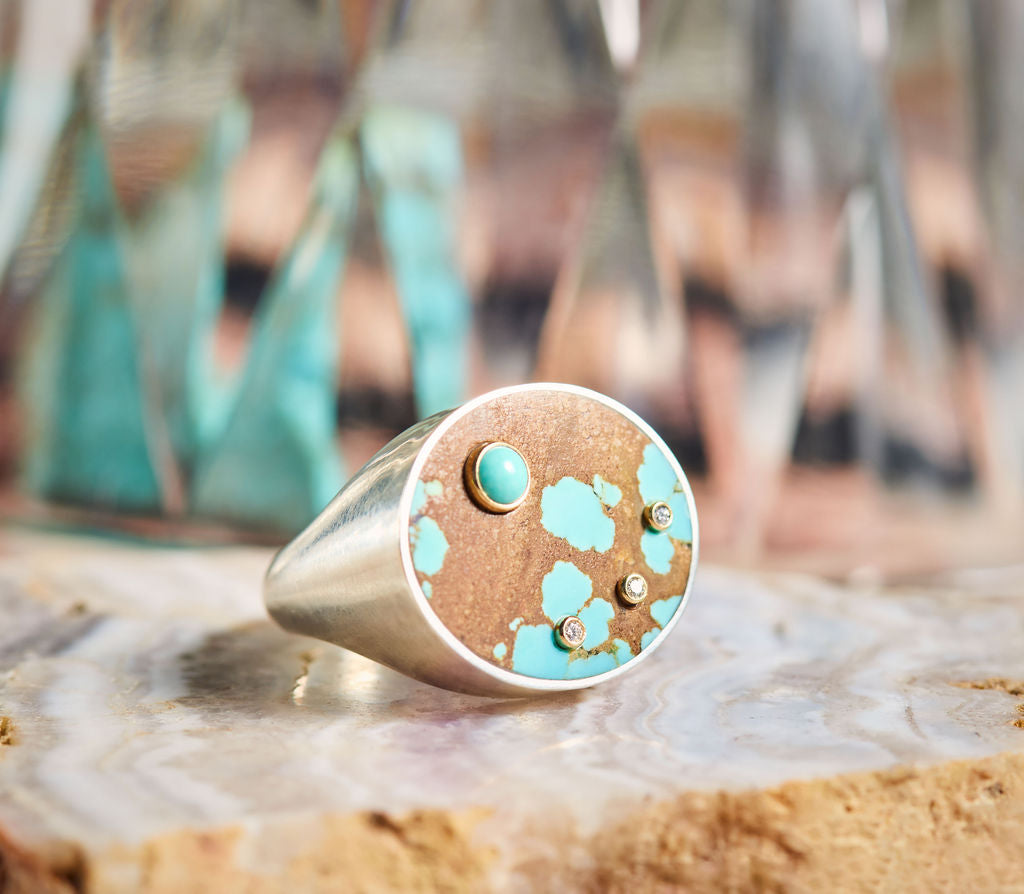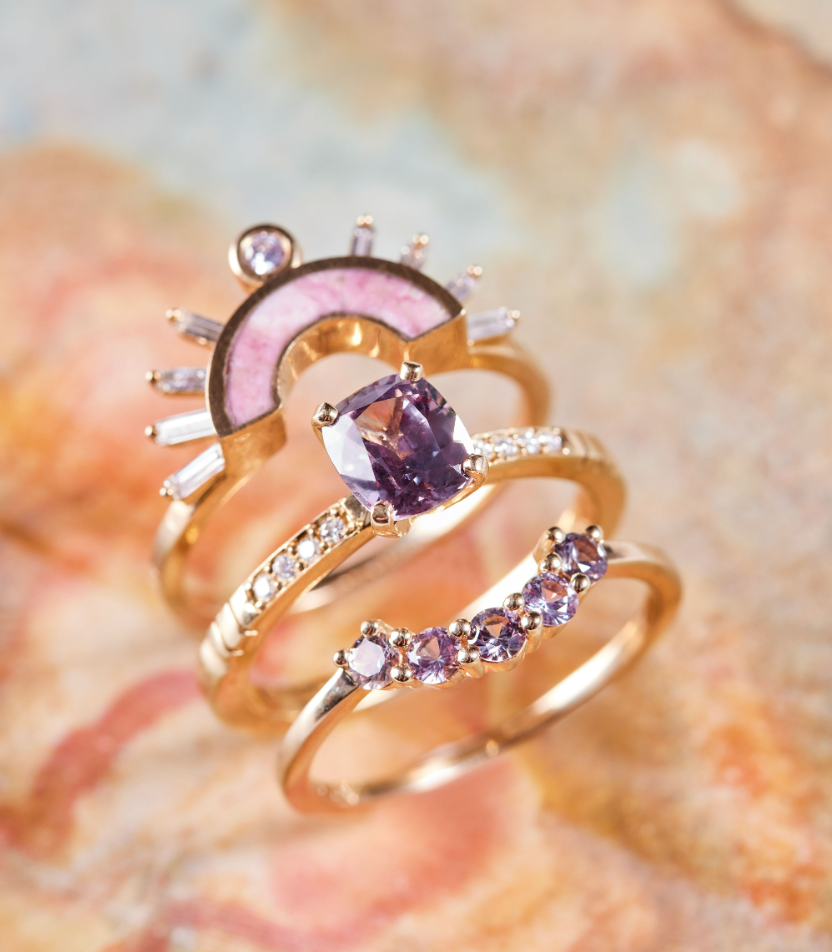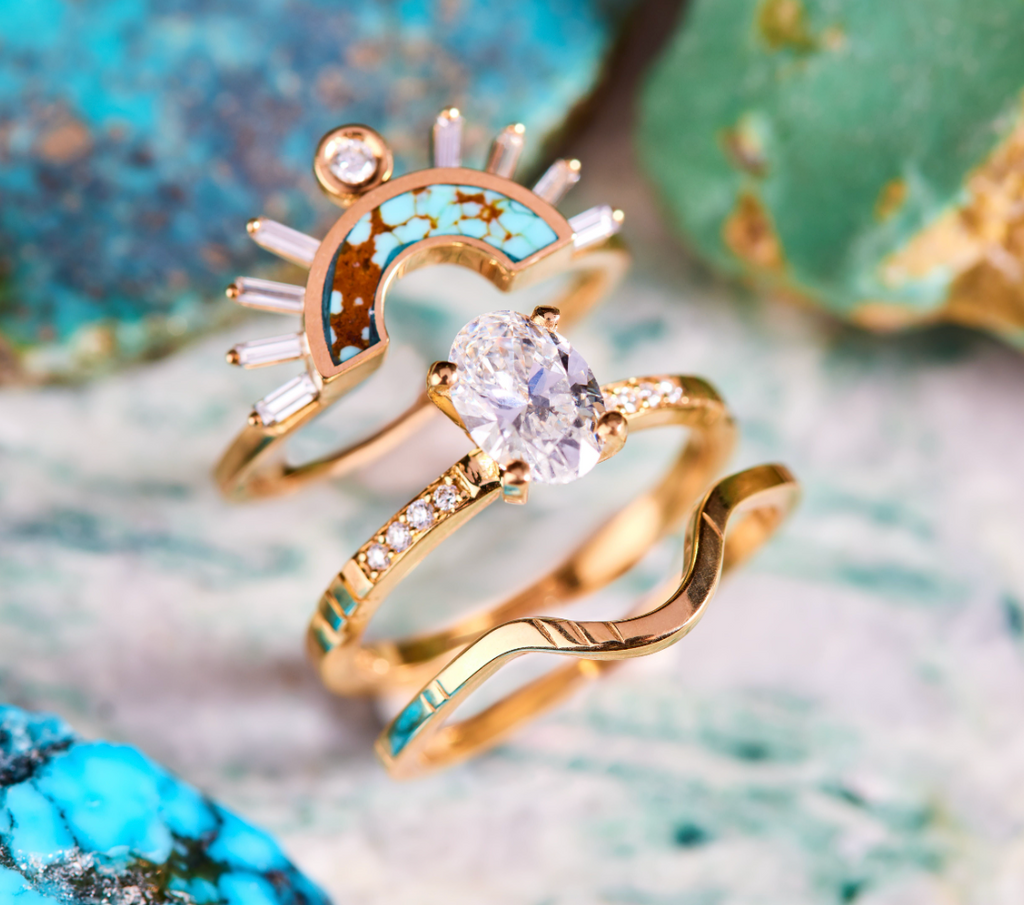Understanding the Differences Between Turquoise, Variscite, and Variquoise

Understanding the Differences Between Turquoise, Variscite, and Variquoise
Turquoise is a well-known gemstone, recognized for its distinct blue-to-green colors. Less familiar, however, are variscite and the natural mineral combination known as variquoise. This article explores the scientific differences between these minerals and explains what distinguishes each gemstone clearly.
Turquoise: Copper’s Blue-Green Influence
Turquoise is a phosphate mineral composed primarily of hydrated copper and aluminum phosphate (CuAl₆(PO₄)₄(OH)₈·4H₂O). Its distinctive blue-to-green colors result from copper within its chemical structure. The presence of iron and zinc can further influence turquoise’s color intensity and hue, causing the variations between vibrant blue and greenish tones. The presence of dark matrix patterns often seen within turquoise comes from surrounding host rock materials, typically limonite or sandstone.
Variscite: A Chromium-Aluminum Connection
Variscite, often confused with turquoise due to superficial similarities, has notable chemical differences. Variscite is a hydrated aluminum phosphate mineral (AlPO₄·2H₂O), lacking copper. Instead, its characteristic green shades primarily come from traces of chromium or sometimes vanadium. Variscite typically presents colors ranging from pale mint greens to deeper emerald-like hues, without the characteristic blue coloration seen in turquoise.
Chemically, the absence of copper clearly differentiates variscite from turquoise. Moreover, variscite is generally softer and more porous, scoring around 3.5 to 4.5 on the Mohs hardness scale, compared to turquoise’s hardness of about 5 to 6.
Variquoise: A Natural Hybrid
Variquoise is a mineral specimen displaying a natural combination of turquoise and variscite. In geological environments where conditions fluctuate, copper-rich turquoise and aluminum-dominant variscite may occur together, forming distinctive mixed mineral compositions. The result is a gemstone featuring a combination of blue and green tones with patterns unlike those seen in either turquoise or variscite alone.
Distinguishing Characteristics: Turquoise, Variscite, and Variquoise
-
Chemical Composition:
-
Turquoise: Hydrated phosphate of copper and aluminum (CuAl₆(PO₄)₄(OH)₈·4H₂O).
-
Variscite: Hydrated phosphate of aluminum (AlPO₄·2H₂O), with chromium or vanadium providing green coloration.
-
Variquoise: A naturally occurring mixture of turquoise and variscite minerals, chemically heterogeneous.
-
-
Color and Appearance:
-
Turquoise: Blue to bluish-green, influenced primarily by copper.
-
Variscite: Green shades ranging from pale mint to emerald green, due to chromium or vanadium.
-
Variquoise: Mixed blue-green hues, presenting patterns indicative of a hybrid mineral structure.
-
-
Geological Formation: These phosphate minerals typically form within rock fissures or cavities through precipitation from phosphate-rich groundwater solutions, influenced by specific geological and chemical conditions.
Considerations for Selection
Choosing among turquoise, variscite, or variquoise depends largely on aesthetic preference and appreciation for geological uniqueness. Scientifically, these minerals offer insight into the conditions and chemistry of the regions where they formed, making them subjects of interest beyond their visual appeal.
Explore our collection to find examples of turquoise, variscite, and variquoise, each showcasing distinct chemical and geological characteristics.



